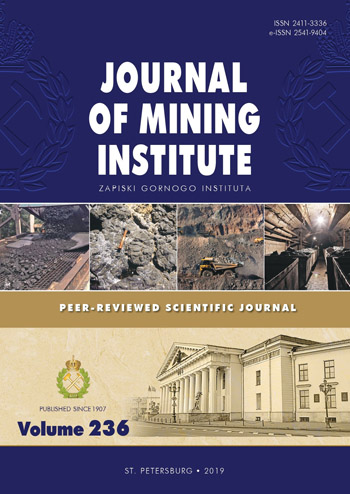Determining the stability of the borehole walls at drilling intervals of loosely coupled rocks considering zenith angle
- Ph.D. Associate professor Saint-Petersburg Mining University
Abstract
During development of drilling projects, a whole array of data is needed considering the properties of rocks and the conditions of their bedding. Accounting for geomechanical processes occurring in the near-wellbore zone allows avoiding many complications associated with the violation of the wellbore walls stability at all stages of its construction and operation. Technological and technical factors such as vibration and rotation of the drilling string, formation of launders during the descent and ascent of the assembly, pressure pulsation during the start and stop of pumps, hydrostatic and hydrodynamic pressure of the drilling fluid, its composition and properties, have a great influence on the stress-strain state of the medium opened by the well. The washing fluid circulating in the well should provide backpressure to the reservoir, not interact with the rocks chemically, colmatage channels in porous and fractured rocks, preventing penetration of the mud into the medium, by creating an impermeable barrier at drilling clay seams that are prone to swelling, cracking, etc. The article discusses the method for determining the stability of the directed well walls, taking into account the penetration of drilling mud into the pores and fractures of rocks. The technique will allow adjusting the zenith angle of the well during the workout of an unstable interval at the design stage, or selecting a drilling fluid composition to ensure fail-safe drilling.
